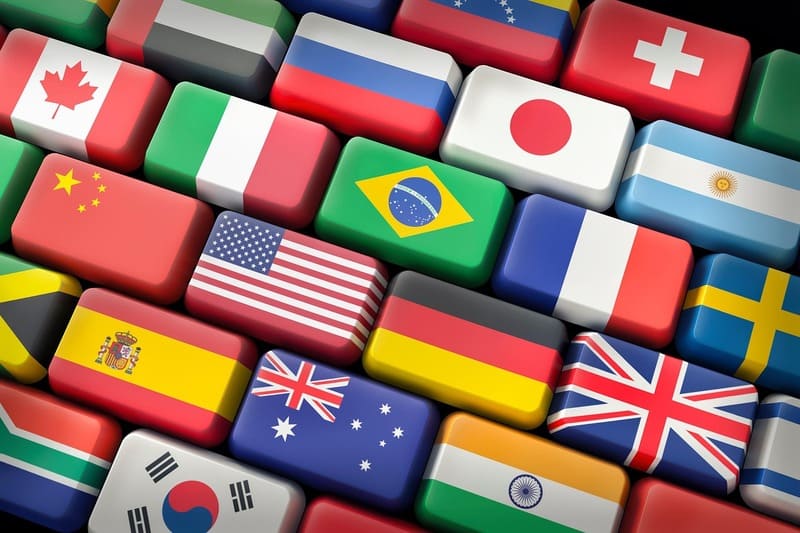In today’s globalized world, cross-border business has become the norm. Companies from all over the world collaborate, invest, and expand their markets without geographical boundaries. However, despite this seamless connectivity, business document translation remains one of the most persistent challenges in international operations.
Business documents such as contracts, financial reports, partnership proposals, and marketing materials require high-precision translation. Unfortunately, translation errors are still common, even in large, experienced companies.
Minor errors in these endeavors can have serious consequences, ranging from misunderstandings between business partners to legal violations and financial losses. For example, a single mistranslated legal or technical term can alter the meaning of an entire agreement.
Therefore, companies need to ensure that translations are carried out by professionals who understand the business context, culture, and industry-specific terminology. With accurate and professional translation, businesses can build trust, facilitate cross-cultural communication, and ensure they maximize every international opportunity. To avoid these mistakes, let’s learn four mistakes to avoid when translating.
Mistake #1: Thinking Translation Is Just About Words
One of the most common mistakes in business document translation is assuming that translation is simply replacing words from one language to another. Translation is more than a linguistic process—it requires understanding context, culture, and communication intent. In the world of international business, every document has strategic significance that goes far beyond the words on paper.
Business documents such as contracts, financial statements, operational or cooperation agreements contain legal nuances and technical terms that must be translated accurately to avoid misinterpretation.
For example, a legal term in Indonesian can have different legal implications when translated into Vietnamese without a thorough understanding of the Indonesian law. Furthermore, cultural aspects also play a significant role; a style of language considered professional in one country may sound overly stiff or even impolite in another.
Mistakes in translation can impact a company’s reputation and cause significant losses. Therefore, business document translation must be performed by professional translators who understand the industry context, the target culture, and the legal implications of each terminology used.
Good translation not only conveys the same message but also maintains credibility, clarity, and trust among the parties involved in international business.
Mistake #2: Ignoring Cultural Nuances
Another significant pitfall in business document translation is the oversight of cultural nuances in the target language. Many companies prioritize linguistic accuracy, often at the expense of understanding how their message will be received by audiences in other countries. Yet, in international business communications, cultural comprehension is just as vital as linguistic precision. Ignoring these nuances can lead to misinterpretation and potential miscommunication.
For example, business reports translated from English into Indonesian often sound too blunt or direct. In Indonesian culture, such a communication style can be considered impolite or even offensive.
Conversely, if the translation is done in an overly formal or wordy style, the message can lose clarity and feel awkward to clients who prefer efficient communication. For instance, while English marketing copy may sound dynamic and concise, its literal translation into Japanese might require a more polite tone to feel natural.
Effective business document translation necessitates the adaptation of tone, style, and word choice to align with the cultural norms of the readers. Professional translators, with their linguistic mastery and cultural acumen, play a pivotal role in this process.
They not only understand the language but also the etiquette of business communication in both cultures. By meticulously attending to cultural nuances, companies can deliver messages that are more fluid, professional, and persuasive. Ultimately, culturally sensitive translation aids in fostering stronger, more respectful, and more sustainable business relationships in the global marketplace.
Mistake #3: Forgetting About Industry-Specific Terminology
Neglecting technical terms and industry-specific jargon is one of the most damaging translation mistakes. Each sector, such as law, medicine, technology, or finance, has its own unique terminology that often cannot be translated literally.
For example, the terms “cloud computing” or “due diligence” have specific meanings that must be preserved to ensure clarity and legal compliance. In addition, translating contracts and agreements can result in losses for both parties and even violate local laws.
Unfortunately, many companies do not provide translators with a glossary or official terminology guide. As a result, translation teams often interpret terms differently, leading to inconsistencies across documents. This type of incoherence can undermine a company’s credibility, especially in professional communications or marketing materials aimed at international clients.
Businesses can prevent this issue by implementing a structured terminology management system. This involves creating and maintaining a terminology database or style guide that lists company-specific terms and their official translations. By updating and sharing this document with all translators or language partners, you can ensure that technical terms are used consistently across all projects and communication channels. This not only strengthens the company’s professional image but also enhances message clarity and reader trust.
Mistake #4: Skipping the Review Stage
The revision and proofreading stage is often overlooked in the translation process, yet it is crucial to ensuring the accuracy and professionalism of the final product. Many companies rush to send translated documents without conducting a final check.
As a result, minor errors such as misspellings, grammatical errors, or inappropriate word choice can slip by unnoticed. Even a single typo can change the meaning of an entire sentence and lead to serious misunderstandings, especially in legal, technical, or business contract documents. In legal contracts, a single misplaced comma or mistranslated clause could result in financial penalties or breached agreements.
The review process not only detects linguistic errors but also ensures consistency of writing style, terminology, and appropriateness for the cultural context. Ideally, documents should be translated by one professional, then reviewed by a second editor or proofreader proficient in both languages. This stage also helps identify sentences that sound stiff or unnatural in the target language.
Neglecting the revision process can damage a company’s reputation and create an unprofessional impression in the eyes of clients or international partners. Therefore, allocate dedicated time for quality assurance before publishing a document.
Investing time in the proofreading stage will result in a more accurate, clear, and high-quality translation, while also reflecting the company’s attention to detail and communication excellence.
The Cost of a Small Mistake — Why Accuracy Equals Trust
In the global business world, a small translation error can have significant consequences. A poorly chosen word, a mistranslated phrase, or the wrong context can drastically change the meaning of a message.
Consider the potential legal ramifications if a contract were ambiguously translated. A single difference in terminology could lead to misinterpretation and even legal disputes, highlighting the critical need for precise translation.
Similarly, when marketing materials are translated without considering cultural nuances, a message that should be convincing can end up offending potential customers.
Instances of mistranslation aren’t just about language; they’re about trust. A single mistranslation can erode years of brand reputation, reminding us that accuracy is not optional—it’s foundational.
Clients who discover errors in official documents immediately question a company’s professionalism and credibility. The financial implications of lost trust due to translation errors are significant, as rebuilding it takes far more time and money than simply performing additional checks.
Translation accuracy is not just a linguistic task; it’s a reflection of a business’s core values: reliability, professionalism, and commitment to quality. Language is a company’s face to the world, and every word chosen reflects its reputation.
Therefore, ensuring translation accuracy is not simply a task, but a crucial part of a long-term trust-building strategy. In cross-language communication, accuracy equals trust, and trust is the most valuable currency in the modern business world.
How to Do It Right — Building a Smarter Translation Process
Building an effective translation process isn’t just about speed, but also about strategy and collaboration. The first step is to establish a translation workflow that involves several layers: human translators at the core of the process, whose unique skills and understanding are irreplaceable, proofreaders to ensure language accuracy, and client reviewers to ensure it aligns with the business context. This layered approach helps maintain quality and prevent errors.
Furthermore, it’s crucial to use an official company glossary and style guide. These documents ensure that technical terms, style, and tone remain consistent across all materials. This ensures that the company’s brand identity and message remain intact, even when translated into multiple languages.
Technology can also be a valuable ally if used wisely. AI-based tools or translation memory can significantly increase efficiency, but the final result still needs to be refined by human intuition and sensitivity. AI can speed things up, but only humans understand nuances and cultures, ensuring the accuracy and cultural relevance of the translation.
Finally, build long-term relationships with professional translation agencies that understand your company’s global business context. Ongoing collaboration enables the translation team to better understand the nature and purpose of your communication, resulting in translations that are not only accurate but also strategic and impactful.
Partnering with Professionals — How Speequal Makes Business Translation Seamless
When translating business documents, you need to collaborate with a professional translation service provider like SpeeQual. Here’s how you can identify a reliable partner—and why SpeeQual stands out.
1. Prioritize Expertise in a Specific Field
Choose a translation service provider or agency with experience in your business field, such as law, finance, technology, or marketing. SpeeQual has a team of translators who are experienced and understand industry terms and context, resulting in more accurate and natural translations.
2. Check Portfolio and Reputation
Request examples of translation results or case studies of previous projects. Also, review reviews or testimonials from other clients to ensure the credibility and consistency of their service quality. SpeeQual, for example, has been trusted by numerous clients in diverse fields, from technology to automotive.
3. Ensure a Quality Control Process
Professional partners have a workflow that involves a lead translator, an editor, and a proofreader. SpeeQual’s multi-layered review system demonstrates a commitment to accuracy and quality.
4. Use a Glossary and Style Guide
Make sure they are willing to work with your company’s glossary and style guide. This is important to maintain consistent terminology and tone throughout the document.
5. Evaluate Communication and Responsiveness
At SpeeQual, responsiveness and reliability are at the core of our client service philosophy.
Closing: It’s Not Just Translation, It’s Communication
Translation isn’t simply transferring words from one language to another; it’s about conveying the meaning, emotions, and values a brand wants to build. In a global business context, every word plays a crucial role in shaping perceptions, building trust, and maintaining a company’s credibility.
Therefore, successful cross-language communication relies on the collaboration of people, technology, and cultural understanding. With a careful and strategic approach, translation can become a bridge that strengthens business relationships, not just a linguistic task.
At SpeeQual, we prioritize three elements: a professional, competent translation team, technology to simplify the process, and an understanding of the target country’s culture. With a network of native translators fluent in 17 Asian languages, we ensure your brand speaks authentically to every market.
This translation process prioritizes not only precision and accuracy but also responsiveness and solutions, ensuring your business’s every need and message are conveyed. Get ready to be relevant in the global market with our business document translation services!





